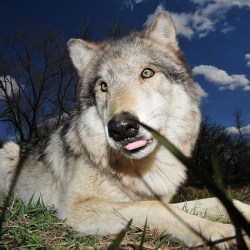Dogs Split From Wolves Much Earlier Than Previously Thought

A new study indicates that humans befriended dogs well before we began farming and settled in villages over 10,000 years ago. Recently an ancient wolf bone was discovered in Siberia which suggests that dogs and wolves split from a common ancestor as far back as 27,000 years ago. And whilst researchers are quick to point out that separation and domestication are not quite the same thing, it does mean it is possible that domestication occurred much earlier than was previously thought.
The split occurred 16,000 years ago
Pontus Skogland of Harvard Medical School says previously, the general consensus was that wolves and dogs split about 16,000 years ago. Whilst the prehistoric wolf has now gone extinct, its descendants live on in Arctic sled dogs. Dr. Skoglund says a portion if the genome of a Siberian husky can trace its origin right back to the ancient Siberian wolf. Other dogs with a primordial DNA connection include Greenland dogs, the Chinese Shar-Pei and the Finnish Spitz.
Mysterious ancestral wolf
Scientists used to believe that dogs could trace their origin back to gray wolves. However as a result of genetic studies they now know that both wolves and dogs share a common ancestor. This ancestor is known as the prehistoric wolf and used to roam throughout Asia and Europe between 9,000 to 34,000 years ago. There is however one mystery that remains. No one is able to pin point what kind of wolf gave rise to the huge variety of dog breeds that are around today. The wolf remains found in Siberia do not solve this puzzle because it too diverged from the wolf family tree round about the same time as gray wolves and dogs says Dr. Skoglund.
Hunter gatherers befriended dogs
If humans and dogs became companions when humans were hunter gatherers rather than farmers, it is thought that perhaps dogs helped with hunting or kept other carnivores away. One interesting theory suggests that dogs and humans combined to drive Neanderthals into extinction. Dr. Skogland thinks it is possible that the Siberian husky followed nomads all the way across the Bering Land Bridge, all the while picking up wolf DNA. He thinks it may have been beneficial for the husky to absorb genes that were uniquely adapted to the Arctic environment.



